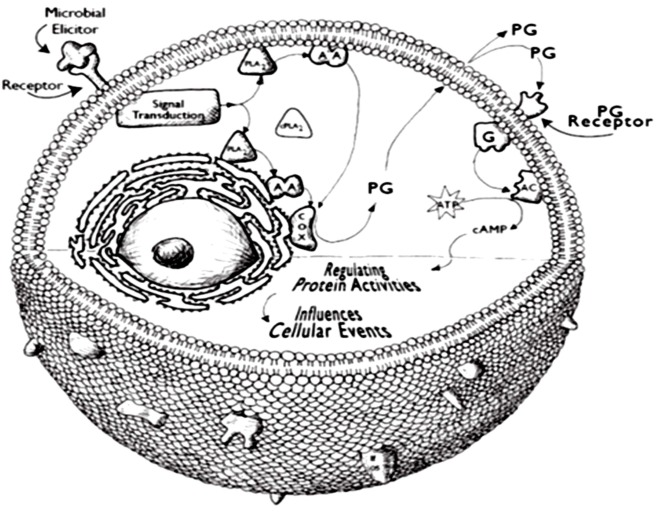Figure 2.
A model of PG action in hemocytes. A stimulator would be a chemical component of an infecting microorganism, such as LPS or laminarin. As modeled here, a phospholipase A2 is activated by translocation from the cytosol to intracellular and plasma membranes. The activated phospholipase A2 releases AA from cellular phospholipid pools. The AA is subsequently converted into PGE2 or other eicosanoids. PGs are exported from the cell by specific PG transporter proteins. The PGs can interact with receptors located on the exporting cell (autocrine action) or with receptors located on other cells (paracrine action).

